Culture methods and matters needing attention of pearl orchid can pearl orchid be hydroponically cultured
Pearl orchid, a round, thick heart-shaped leaves, like a string of wind chimes swaying in the wind, these are its leaves. Because the leaves are mutual, sparse, heart-shaped, dark green, thick and succulent, very much like beads, it is known as Buddha beads, green grapes and green bells. Others call it Buddha bead hanging orchid and lover's tears. Do you know the culture method of pearl orchid? The following will give you a specific introduction to the relevant knowledge of pearl orchids.
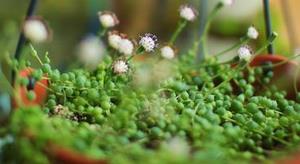
First, pearl orchid
Pearl hanging orchid by a string of bulging, full green oval leaves, also known as jadeite beads, lover's tears, Buddha beads hanging orchid, emerald beads, green bell, green bell. Pearl hanging orchid is not only an excellent hanging foliage plant in the room, but also a good indoor air purification flower.
Morphological features: Pearl hanging orchid, a round, thick heart-shaped leaves, like a string of wind chimes swaying in the wind, this is its leaves. Because the leaves are mutual, sparse, heart-shaped, dark green, thick and succulent, very much like beads, it is known as Buddha beads, green grapes and green bells. Others call it Buddha bead hanging orchid and lover's tears. The scientific name of Pearl hanging Orchid is Emerald Pearl, which belongs to perennial evergreen stoloniferous herbs of Compositae. The stem is slender and the whole plant is covered with white leather powder. Inflorescences capitate, terminal, 3-4 m long, hooked, flowers white to light brown. Florescence: December to January of the following year.
Biological habits: watering should be dry rather than wet in cultivation, which is one of the keys to success. When the weather is dry, you can spray water to the leaves and vines to make up for the lack of moisture and keep the beads green and full. Prefer semi-shade, sun exposure may burn beads, too weak light will not grow strong.
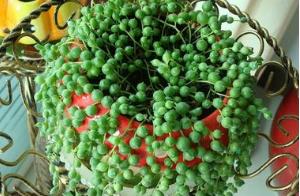
Second, the culture methods and matters needing attention of pearl orchids.
Pearl hanging orchid like semi-shady environment, if the light is too strong or insufficient, the leaves will easily become light green or yellowish green, lack of vitality, lose their due ornamental value, or even die; such as direct sunlight, dry air, the most likely to cause hanging orchid scorched, so it should be placed in a cool and ventilated place, and pay attention to maintain environmental humidity.
The leaves are succulent and succulent, so they are resistant to drought. Watering should be dry rather than wet in cultivation, which is one of the keys to success. When the weather is dry, you can spray water to the leaves and vines to make up for the lack of moisture and keep the beads green and full. Prefer semi-shade, sun exposure may burn beads, too weak light will not grow strong.
The root system of the plant is very shallow and can be planted in a shallow pot. Generally use tiles to cover the bottom hole, and cover with a layer of cinder or coarse sand to increase air permeability and filtration, the soil is best to use rotten leaf soil, mixed with a certain amount of sand, the soil-to-sand ratio is about 1:3.
Pearl orchid is mainly harmed by snails, aphids, cotton scale, soot disease and stem rot.
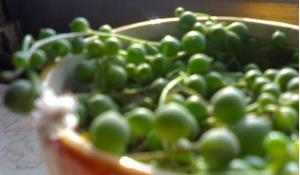
I. Culture methods
1. The leaves are succulent and succulent, so they are resistant to drought. Watering should be dry rather than wet in cultivation, which is one of the keys to success. When the weather is dry, you can spray water to the leaves and vines to make up for the lack of moisture and keep the beads green and full. Prefer semi-shade, sun exposure may burn beads, too weak light will not grow strong.
2. The root system of the plant is very shallow and can be planted in shallow pot. Generally, tiles are used to cover the bottom hole, and covered with a layer of cinder or coarse sand to increase air permeability and filtration (especially when plastic pots are commonly used nowadays). The soil had better use rotten leaf soil (autumn and winter trees mixed with a certain amount of broken soil exposed in the wild and pure mixed with a certain amount of sand (the soil / sand ratio is about 1:3).
3. Sex is warm and humid, cold-tolerant (low temperature of 0 ℃ in Jianghuai region), high temperature, and the optimum temperature is about 20 ℃ ~ 28 ℃. Both high temperature and low temperature grow slowly, especially when the temperature is more than 30 ℃, it is almost dormant. Less watering and fertilization should be done, otherwise the roots are easy to rot, which is also one of the keys to successful cultivation.
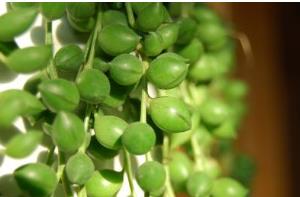
4. Thin fertilizer should be applied frequently in spring and autumn when the growth is exuberant. Spraying 13% of the nitrogen fertilizer and potassium dihydrogen phosphate on the leaves is beneficial to make the beads greener and fatter and improve the ornamental value.
5. There are few diseases and insect pests. Aphids are one of them in spring, which can be wiped off or sprayed with 1500 times omethoate in time, while mites in summer and autumn need to be killed with 1000 times triclofenac. Pay attention to ventilation and increase leaf humidity, can reduce the infection of mites.
6. Pearl orchid can be inserted and propagated. Branches and vines are easy to take root and can be cut off in spring and autumn. Half of them are buried in sand or loose soil, keeping them moist but without stagnant water, and they will soon take root for planting.
II. Horticultural uses
Pearl hanging orchid with small basin suspension cultivation, very interesting, a round, thick leaves, like a string of wind chimes swaying in the wind, is the ideal flower for family suspension cultivation.
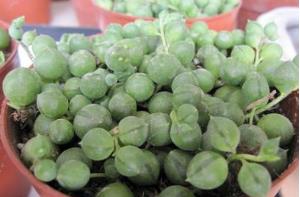
Third, diseases and insect pests: there are few diseases and insect pests in Cymbidium, which mainly include physiological ☆ prohibition of ☆ disease and yellowing of leaf tip, so fertilizer and water management should be strengthened. Check regularly and wipe off the shell insects and whitefly on the leaves in time. Cymbidium is not easy to suffer from diseases and insect pests, but if the basin soil is stagnant and poorly ventilated, it will not only lead to rotting roots, but also may cause root rot, so attention should be paid to spray control.
IV. matters needing attention
Matters needing attention in the culture of pearl orchid
1. Temperature control.
Cymbidium prefers warm and humid climate and is not cold-resistant. It grows fastest at 20 ℃ and 24 ℃, stops growing at more than 30 ℃, and the leaves are easy to turn yellow and dry. Therefore, summer heat prevention and cooling should be paid attention to ventilation, and cultivation should be carried out in the greenhouse in winter. The overwintering temperature should be 10 ℃, not lower than 5 ℃.
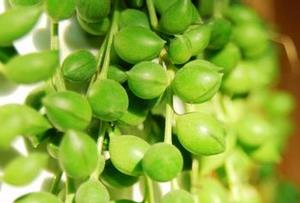
2. Light adjustment.
Outdoor cultivation in summer should pay attention to shading, so as not to make the light too strong, otherwise sunburn is very easy to occur. Pay attention to daylighting when overwintering in the shed in winter to prevent the lack of light and the color of the leaves.
3. Regulation of water and fertilizer.
Spring and autumn growth season, watering should be adequate, basin soil should always keep moist, and often spray branches and leaves with water close to room temperature, to prevent dry tip, but not stagnant water. Apply rarefied liquid fertilizer once a month in the peak growing season, water less in winter and stop topdressing.
Third, can the pearl orchid be hydroponically cultivated: the answer is no. The hydroponic orchid is generally hydroponic, and the cultivation method of the pearl orchid is mainly cultivated in soil, because it likes a warm, humid and semi-overcast environment. Therefore, a very unique characteristic of pearl orchid is relatively resistant to drought and cold. And like loose and fertile soil rich in organic matter.
Half of it is buried in sand or loose soil, kept moist but without stagnant water, and will soon take root for planting
II. Horticultural uses
Pearl hanging orchid with small basin suspension cultivation, very interesting, a round, thick leaves, like a string of wind chimes swaying in the wind, is the ideal flower for family suspension cultivation.

Third, diseases and insect pests: there are few diseases and insect pests in Cymbidium, which mainly include physiological ☆ prohibition of ☆ disease and yellowing of leaf tip, so fertilizer and water management should be strengthened. Check regularly and wipe off the shell insects and whitefly on the leaves in time. Cymbidium is not easy to suffer from diseases and insect pests, but if the basin soil is stagnant and poorly ventilated, it will not only lead to rotting roots, but also may cause root rot, so attention should be paid to spray control.
IV. matters needing attention
Matters needing attention in the culture of pearl orchid
1. Temperature control.
Cymbidium prefers warm and humid climate and is not cold-resistant. It grows fastest at 20 ℃ and 24 ℃, stops growing at more than 30 ℃, and the leaves are easy to turn yellow and dry. Therefore, summer heat prevention and cooling should be paid attention to ventilation, and cultivation should be carried out in the greenhouse in winter. The overwintering temperature should be 10 ℃, not lower than 5 ℃.

2. Light adjustment.
Outdoor cultivation in summer should pay attention to shading, so as not to make the light too strong, otherwise sunburn is very easy to occur. Pay attention to daylighting when overwintering in the shed in winter to prevent the lack of light and the color of the leaves.
3. Regulation of water and fertilizer.
Spring and autumn growth season, watering should be adequate, basin soil should always keep moist, and often spray branches and leaves with water close to room temperature, to prevent dry tip, but not stagnant water. Apply rarefied liquid fertilizer once a month in the peak growing season, water less in winter and stop topdressing.
Third, can the pearl orchid be hydroponically cultivated: the answer is no. The hydroponic orchid is generally hydroponic, and the cultivation method of the pearl orchid is mainly cultivated in soil, because it likes a warm, humid and semi-overcast environment. Therefore, a very unique characteristic of pearl orchid is relatively resistant to drought and cold. And like loose and fertile soil rich in organic matter.
Related
- Wuhan Hospital Iron Tree Blooming Result Was Instantly Frightened by the Gardener Master
- Which variety of camellia is the most fragrant and best? Which one do you like best?
- What is the small blue coat, the breeding methods and matters needing attention of the succulent plant
- Dormancy time and maintenance management of succulent plants during dormancy
- Minas succulent how to raise, Minas succulent plant pictures
- What are the varieties of winter succulent plants
- How to raise succulent plants in twelve rolls? let's take a look at some experience of breeding twelve rolls.
- Attention should be paid to water control for succulent plants during dormant period (winter and summer)
- Watering experience of twelve rolls of succulent plants
- Techniques for fertilizing succulent plants. An article will let you know how to fertilize succulent plants.



